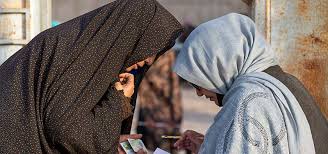- Courses
- GS Full Course 1 Year
- GS Full Course 2 Year
- GS Full Course 3 Year
- GS Full Course Till Selection
- Online Program
- GS Recorded Course
- NCERT (Recorded 500+ Hours)
- Polity Recorded Course
- Geography Recorded Course
- Economy Recorded Course
- AMAC Recorded Course
- Modern India, Post Independence & World History
- Environment Recoded Course
- Governance Recoded Course
- Science & Tech. Recoded Course
- International Relations and Internal Security Recorded Course
- Disaster Management Module Course
- Ethics Recoded Course
- Essay Recoded Course
- Current Affairs Recoded Course
- CSAT
- 5 LAYERED ARJUNA Mentorship
- Public Administration Optional
- ABOUT US
- OUR TOPPERS
- TEST SERIES
- FREE STUDY MATERIAL
- VIDEOS
- CONTACT US
SIX YEARS OF MINAMATA CONVENTION ON MERCURY
SIX YEARS OF MINAMATA CONVENTION ON MERCURY
17-08-2023
Latest Context
Recently, the Minamata Convention on Mercury which was adopted in 2013 in Geneva, is the first globally legally binding treaty to protect human health and the environment from adverse effects of mercury has competed its six years.
- It is named after the city in Japan that became the epicentre of Minamata disease which is a neurological disease caused by severe mercury poisoning in the 1950s.
-
About Minimata Convention
- It came into force in 2017. Presently, there are 144 Parties and 128 Signatories to it.
- In 2018, India ratified it with flexibility for continued use of mercury-based products and processes involving mercury compounds up to 2025.
-
Minamata Convention requires that party nations
- Reduce and where feasible eliminate the use and release of mercury from Artisanal and Small-Scale Gold Mining.
- Regulate mercury air emissions from coal-fired power plants, coal-fired industrial boilers etc.
- Phase out or reduce mercury use in products like batteries, switches, lights, cosmetics, pesticides, and dental amalgam.
- Addresses supply and trade of mercury; safer storage and disposal, and stress to address contaminated sites.
Mercury: It is a naturally occurring element which exists in air, water and soil.
- It may have toxic effects on the nervous system, thyroid, kidneys, lungs, immune system, eyes, gums and skin.
- As per WHO, It is considered one of the top ten chemicals of major public health concern
Must Check: IAS Coaching Centre In Delhi



